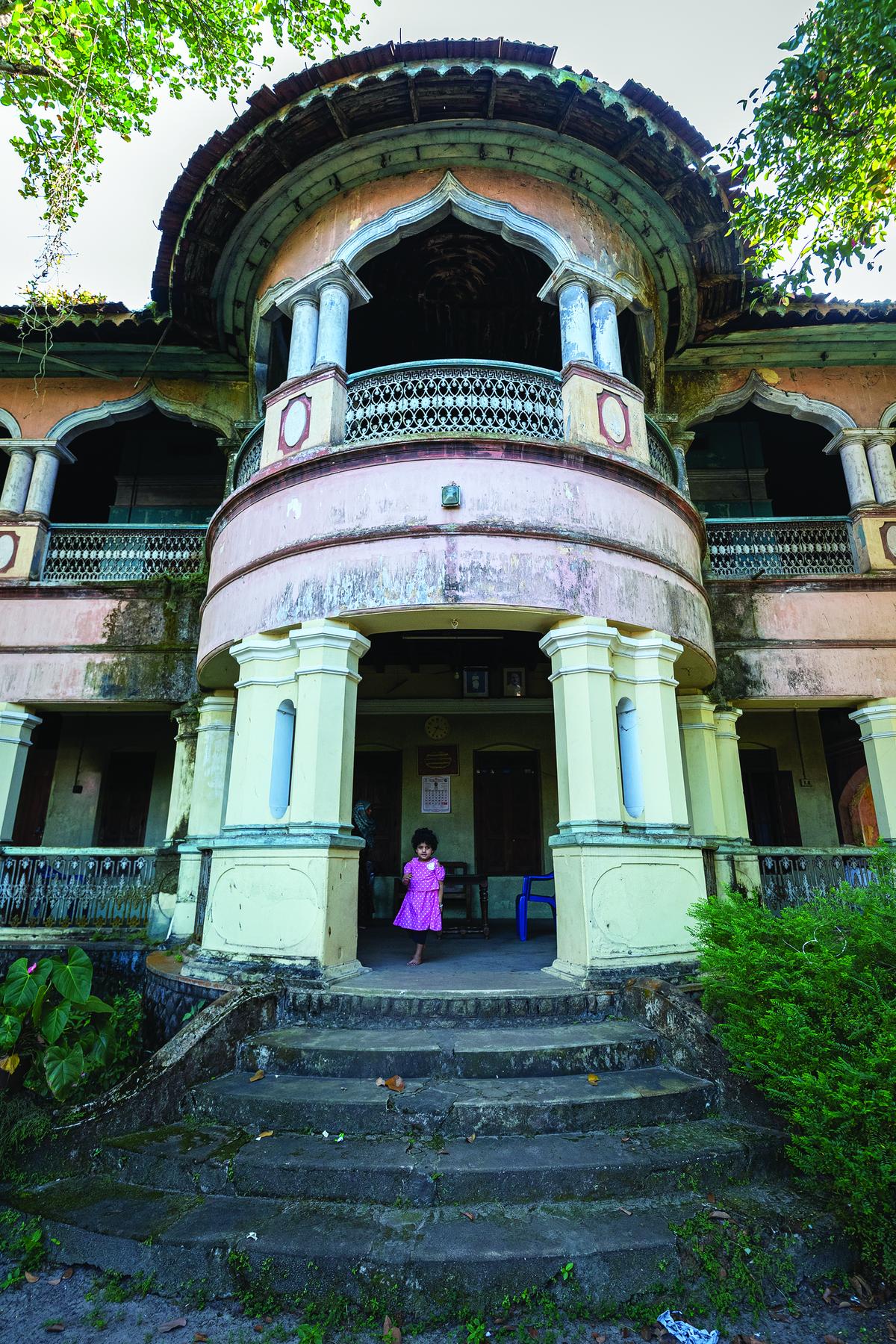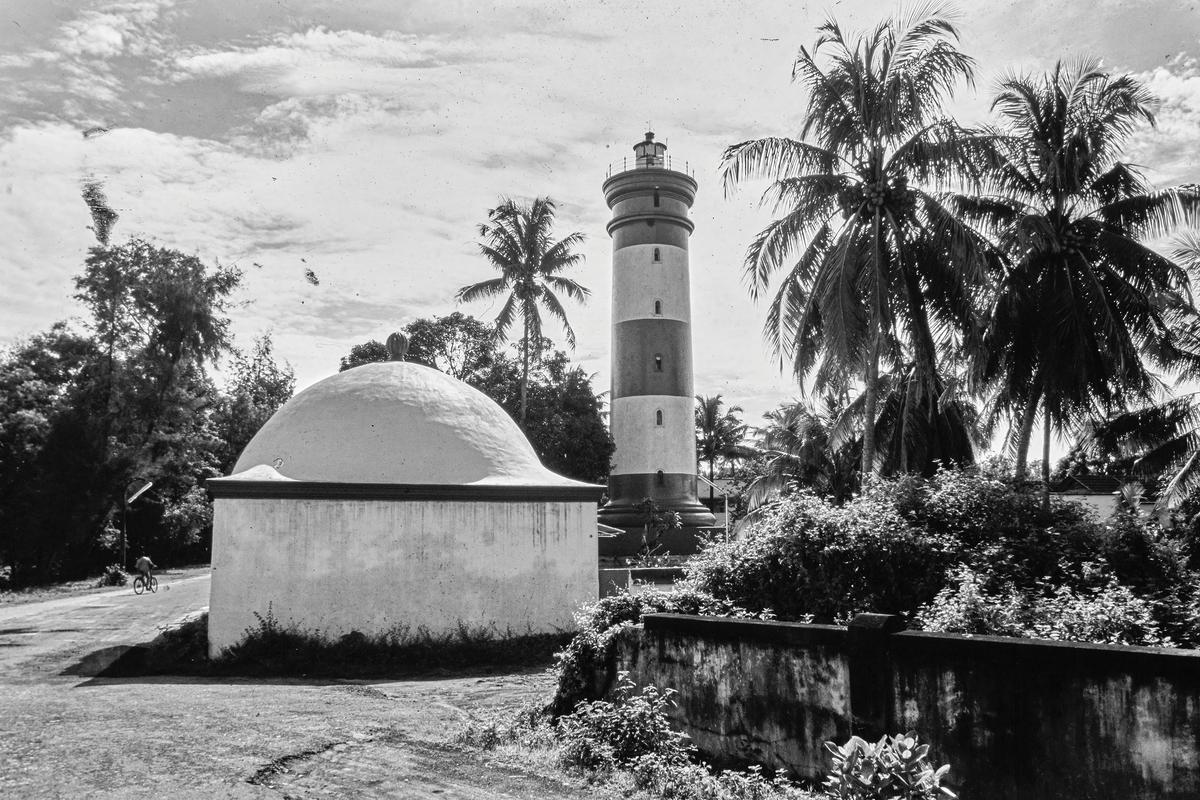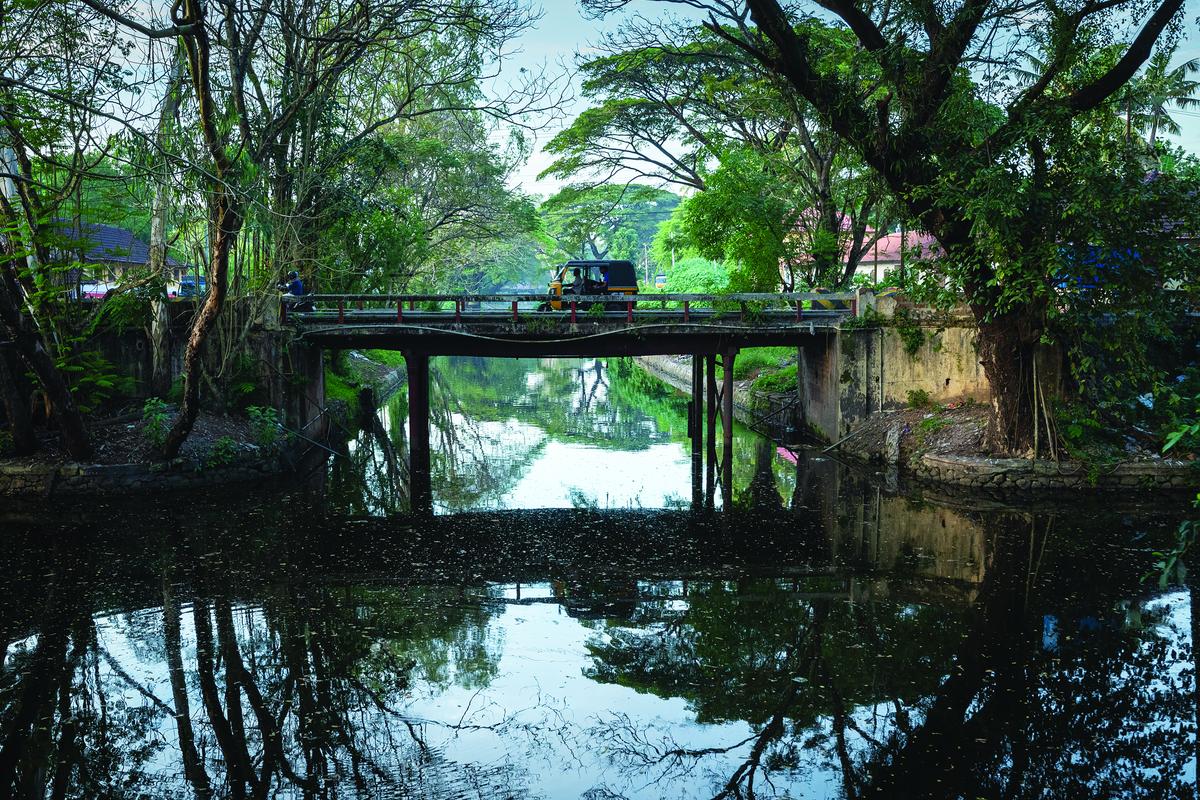As one flips through the coffee table book, The Alleppey Story, the realisation dawns that the network of canals and coir does not even begin to sum up the significance of this town by the sea.
The impressive 272 page book of breath-taking photographs is peppered with information on how this town by the sea came to be, and its historical significance. Brought out by the Preserve Alleppey Society, and compiled by Kochi-based Thought Factory Design, it has inputs in the form of memories tangible and intangible, as photographs and stories.
This book is the labour of love of a group of women, members of the Lion Ladies Club, who got together in 2001, calling themselves the Preserve Alleppey Society (PAS). Driven by a desire to preserve aspects of the town before it succumbed to development, they started with heritage walks around the town for tourists, introducing them to the history of the town.
The view inside one of the heritage buildings in Alappuzha
| Photo Credit:
Kannan KR
Through the book one learns that Alappuzha is a town of many firsts, including being Kerala’s first planned town. It also had the first public post office in Kerala, Kerala’s first school and the oldest lighthouse on India’s west coast. This port town, built before Mumbai and Kolkata, features man-made waterways that existed more than a 100 years before the Suez Canal.
Since the town was not ‘economically vibrant’ at the time, the older buildings remained as did their stories. Thanks to tie-ups with tour operators, tourists who came for the houseboats and the backwaters came into town and were taken on these walking tours. Through their ‘Alleppey on Foot’ PAS took tourists on heritage walks, showing tourists heritage buildings by the canals. The members of the club volunteered as guides, sometimes hosting lunches and snacks for the tourists at their homes.
Although the women were familiar with Alappuzha’s history, they did their research beforehand; resource people included local historian Kalleli Raghavan Pillai.

A view of Vellakkinar House where Kakkazham Bawa, once known as the ‘King of Pepper’ lived. Today Bawa’s descendants occupy the house
| Photo Credit:
Kannan KR
“Alappuzha is a unique town, with several old buildings, canals and coir factories. But there is more to it like the fact that it is modern India’s oldest, planned port town built, not by colonisers, but by the Travancore kingdom,” says Rani John, who was secretary of Lion Ladies Club then and one of the founding members of PAS.
Though it is not easy to pinpoint the exact year Alappuzha was built by the Travancore kingdom, texts suggest that it was sometime in the mid-eighteenth century. The town, built for trade with its network of canals, was cosmopolitan at conception. People from different communities and trades such as Parsis, Gujaratis, Konkani-Brahmins, Jews, Kutchis, Sindhis, and Chettiars were invited to settle there. They lived there and flourished, giving the town its unique character. Although very few of these communities remain, the houses they built and their contributions live on.
Walking the talk
The heritage walks by the Preserve Alleppey Society were, perhaps, one of Kerala’s first. It was the result of trial PAS started out as a fund-raiser for an annual social work project of the Lion Ladies Club of Alappuzha. As the 20-odd members tossed around ideas, they narrowed in on organising heritage walks in order to raise funds for that project.
“Around that time I had been on one in Kolkata, conducted by an architect. It was an enjoyable experience as he pointed out small things and other details. Similarly Kunjumary had been on a heritage walk in Singapore. We felt there was so much more in Alleppey,” says Rani John, the then-secretary of the Lion Ladies Club. Kunjumary John was president at the time. They mooted the idea which the other women wholeheartedly agreed with. “The walks, initially, were two-three hours long. We realised it tired people, we then tweaked it,” says Rani John. Attempts to involve the District Tourism Promotion Council did not pan out.
As part of the walks, they realised that parts of the town had a ‘terrible garbage situation’, which led PAS, in 2001, to get involved in cleaning up a locality in the hope that it would percolate to other parts of the town. They adopted the four kilometre long stretch for segregated garbage collection transforming it to a ‘model street’. Despite their best efforts, it was difficult for PAS to sustain the effort to spread it other part parts of the town. Today the active members of PAS have withered to a handful, and the heritage walks are now handled by one of the younger members.
PAS was registered as a charitable trust in 2004 and in 2018 it was awarded the Indian Responsible Tourism Award for the best urban/neighbourhood tour operator as recognition for how their heritage walks, with a focus on local architecture, community and craft, impacted Alappuzha. Along the way the members of PAS were struck by the realisation that the buildings they saw standing one day may not be around the next time. That is when, in 2014, they felt the need to document the history of the town.

The British built lighthouse tower commissioned in 1860. One of the oldest landmarks of the colonial era, it is a well-preserved monument of the Alappuzha port
| Photo Credit:
SPECIAL ARRANGEMENT
What started out as a plan to document the architecture of Alappuzha, grew into archiving its history, giving it a historical context with reference to Kerala and its maritime history.
The Alleppey Story book
| Photo Credit:
THULASI KAKKAT
This is where Theresa George of Thought Factory Design comes into the picture. She was one of the first people Rani spoke to about putting together a book. It was another five years when, in 2019, they revisited the idea and Theresa came on board. She brought the outsider’s perspective on how the book could be: “Looking at what PAS was doing from the outside. The relevance of the past, the scope of Alleppey and the mark it made in history. Not looking at it [the book] as a document,” says Theresa, the founder and creative director of Thought Factory Design and Via Kerala.
“Through our design firms we offer creative services but this was different from anything we have done! We started at the beginning…from how Alleppey was built from scratch. We hired a team of three researchers, one of whom was a photographer,” she adds. At that point Thought Factory Design was not publishing the book, it was only collating material. The plan was to pitch the material to a publishing house.

The Muppalam bridge
| Photo Credit:
Kannan KR
In 2020, the team had the pitch document and the draft ready to approach publishing houses when Covid-19 hit and lockdown was declared. A year later, in 2021, work on the book restarted in full earnest. That was also the year of the art extravaganza, Lokame Tharavadu, curated by Bose Krishnamachari, which showcased works of 260 artists from across the world. The show cast the spotlight on the town once again.
It was time for the book.
Finally, in 2024, after three years of gathering information, combing archives, interviewing stakeholders, sourcing photographs, accessing information PAS decided to self publish, in association with Thought Factory Design.
From the book
| Photo Credit:
THULASI KAKKAT
“Interviews were conducted, local photographers shared material pro-bono, research was authenticated by speaking to local contacts…” says Rani, underscoring the work that has gone into the book.
The first print run saw 1000 copies being printed, of which 500-odd were sold. “This speaks volumes of the content and the interest people have in knowing more about their history,” says Theresa.
Calling the meticulously researched The Alleppey Story a coffee table book is reductionist. As Rani says, it has a more important role as an archival document of historical significance. Rani says of how each woman who made up PAS came from other places to Alleppey after marriage, and over the years fell in love with the seaside town. The Alleppey Story is their way of memorialising it for future generations. As Theresa says, “The book will be Preserve Alleppey Society’s legacy!”
And as the foreword, by PAS, says, “This book is not an album of ghosts. This book offers a clear, ringing truth – we are still here, close to two million of us in this town alone, armed with stories from our ancestors. We will not disappear quietly into the night.”
The book, priced ₹2500, is available on viakerala.com





